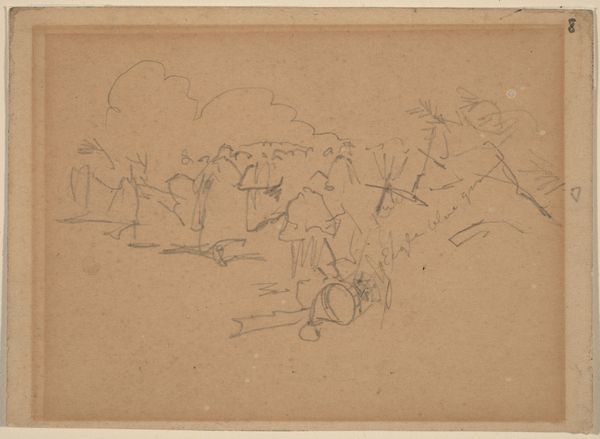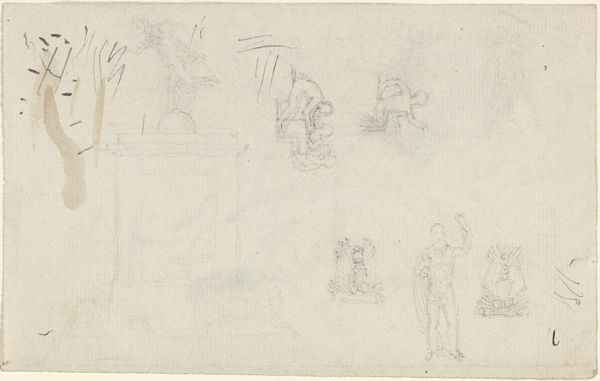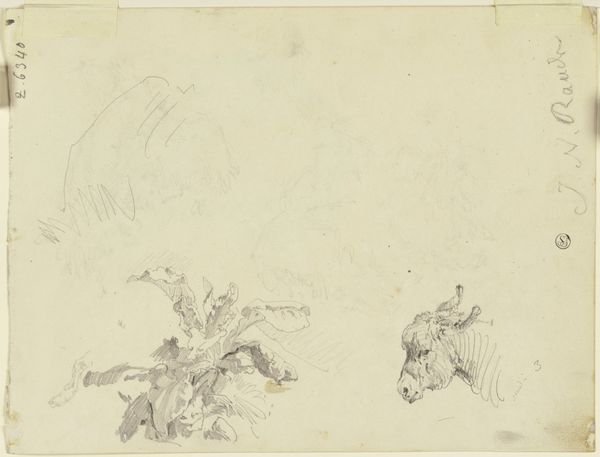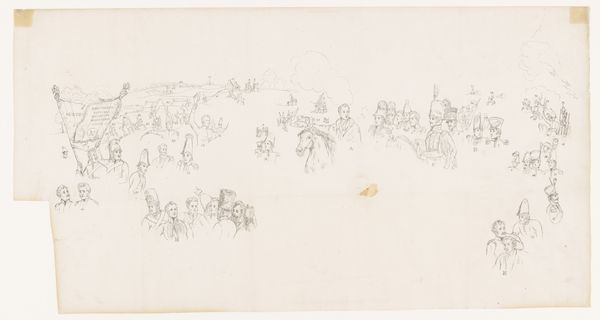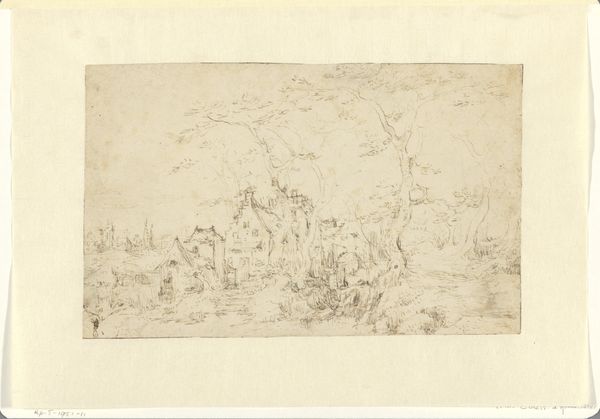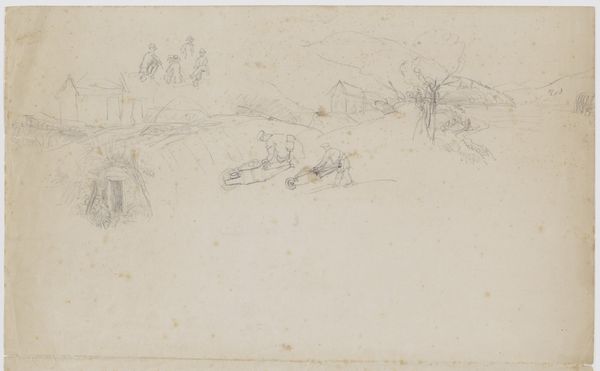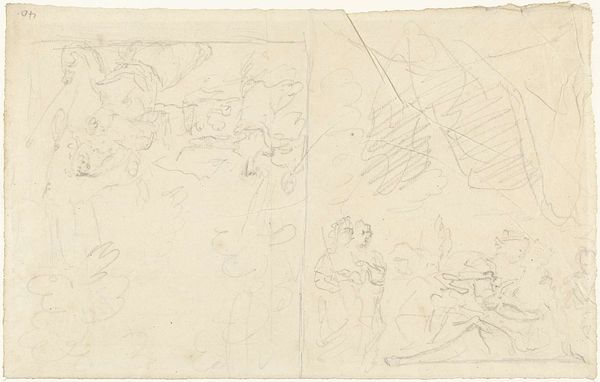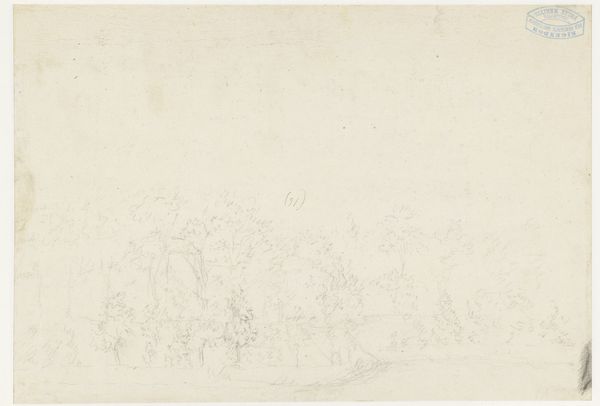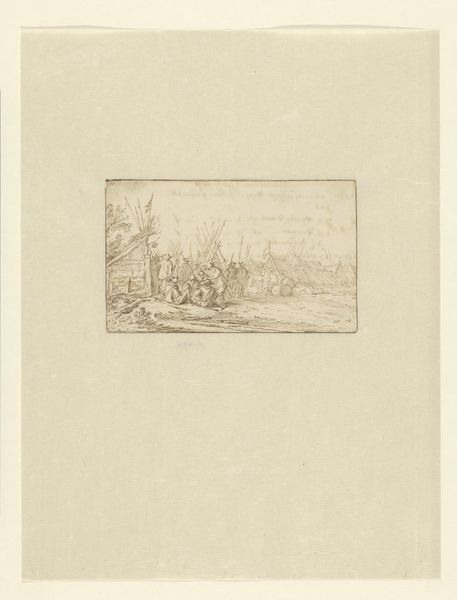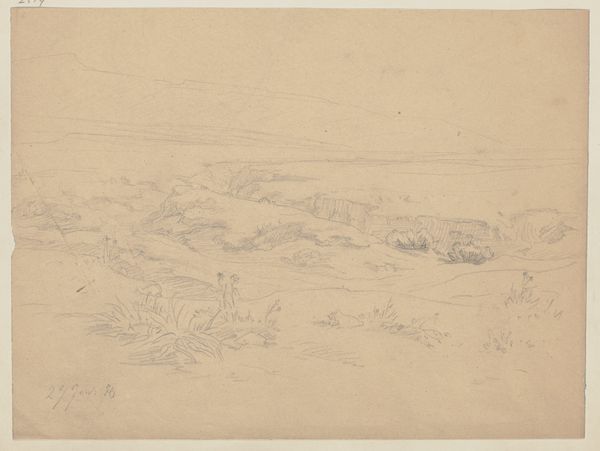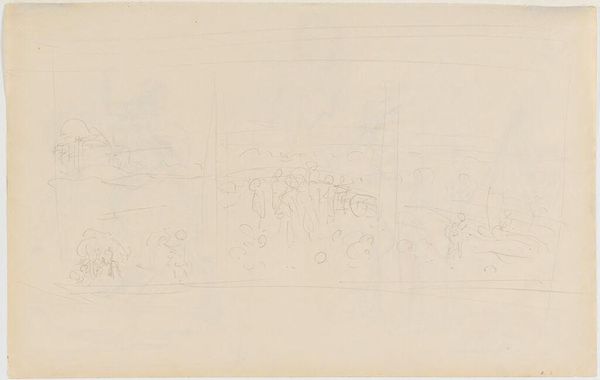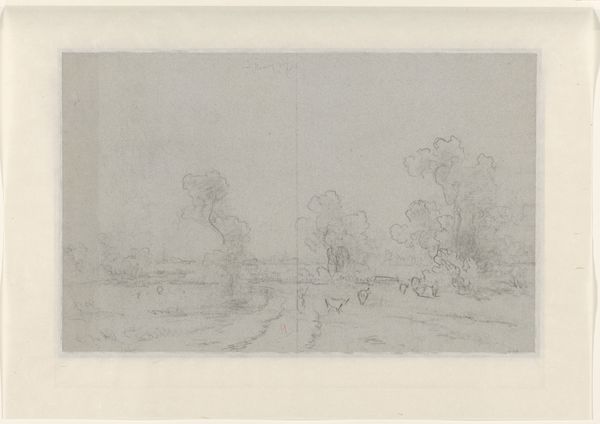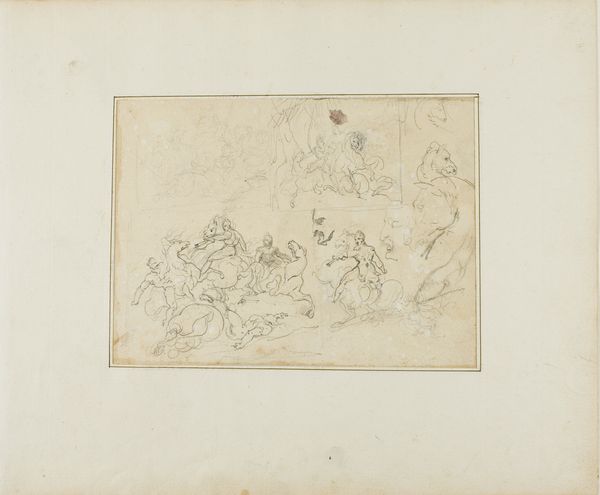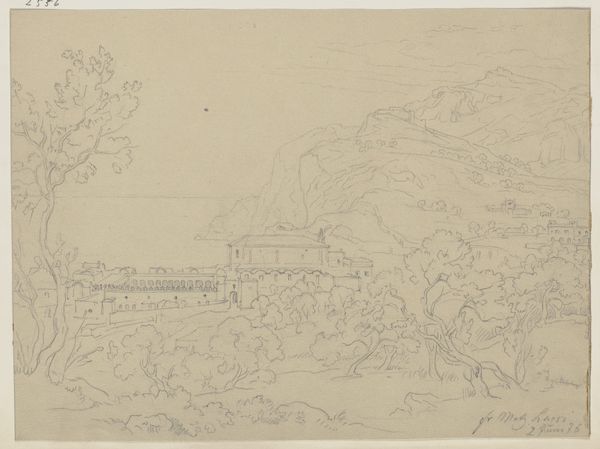![Study of Moses Striking the Rock and a Procession [verso] by Benjamin West](/_next/image?url=https%3A%2F%2Fd2w8kbdekdi1gv.cloudfront.net%2FeyJidWNrZXQiOiAiYXJ0ZXJhLWltYWdlcy1idWNrZXQiLCAia2V5IjogImFydHdvcmtzL2VmMTI4MTdiLTEzYjctNDdjMS1iYzAwLWJlMjlkNGI1MjJmNS9lZjEyODE3Yi0xM2I3LTQ3YzEtYmMwMC1iZTI5ZDRiNTIyZjVfZnVsbC5qcGciLCAiZWRpdHMiOiB7InJlc2l6ZSI6IHsid2lkdGgiOiAxOTIwLCAiaGVpZ2h0IjogMTkyMCwgImZpdCI6ICJpbnNpZGUifX19&w=3840&q=75)
drawing, pencil
#
drawing
#
landscape
#
pencil
#
history-painting
#
academic-art
Dimensions: sheet: 30.6 × 50.6 cm (12 1/16 × 19 15/16 in.) mount: 45.1 × 61.3 cm (17 3/4 × 24 1/8 in.)
Copyright: National Gallery of Art: CC0 1.0
Curator: This pencil drawing, "Study of Moses Striking the Rock and a Procession," was created by Benjamin West in 1778. It showcases two distinct scenes on a single sheet. What's your first impression? Editor: Initially, it strikes me as rather stark and sparse. The use of pencil creates a delicacy, an ethereal quality that seems fitting for historical and religious subjects. Curator: I agree. The choice to render these significant biblical moments in such a light medium seems significant. West, who succeeded Joshua Reynolds as president of the Royal Academy, engages here with ideas of leadership and power, and indeed also popular social history—connecting with contemporary theory on civic virtues and the burden of leading oppressed groups, in a country dealing with both indigenous inhabitants of America and African slaves. How can visual and societal burden co-exist? How might we analyze this through Fanon's writings? Editor: Indeed. Consider the dynamic contrast of light and shadow created through very minimal mark making. Note also that he subtly conveys the narrative, focusing on clear structural balance within each frame rather than emotive figures. I would describe it as a calculated yet beautiful approach to the chosen medium of the pencil itself. Curator: Certainly. The procession scene, though small, can be viewed in the context of colonialism; how the so-called civilised 'procession' occurs when an oppressed mass of population stands behind it. As such, we must question the 'history-painting' categorisation, as history painting is never innocent of historical-supremacist violence. Editor: I can see what you mean. West balances depth, proportion and distribution very intentionally. Observe how within each micro-landscape, figures seem strategically placed, forming relationships in an almost diagrammatic way. Curator: Perhaps it also makes the drawing more unsettling. As viewers, we are complicit observers of the colonial gaze itself. The ethereal nature of pencil in itself can indicate temporality, but here I suggest that temporality is not as relevant as power, performance and display of such power to colonial audiences in particular, a 'memory display', if you would, even for contemporary audience today who are encountering the very foundations of colonial visual art. Editor: I find it stimulating to encounter West’s rendering from two different standpoints. Thank you for shining a light on new interpretations that contextualize colonialism as it occurs even within form and structure. Curator: And thank you for making sure my perspective stays well inside the frame of visual formalism.
Comments
No comments
Be the first to comment and join the conversation on the ultimate creative platform.
